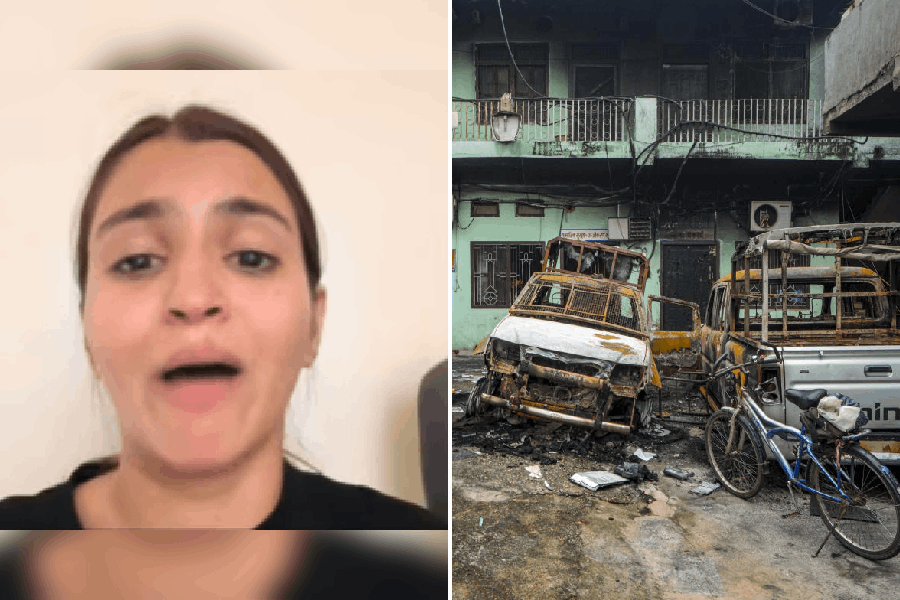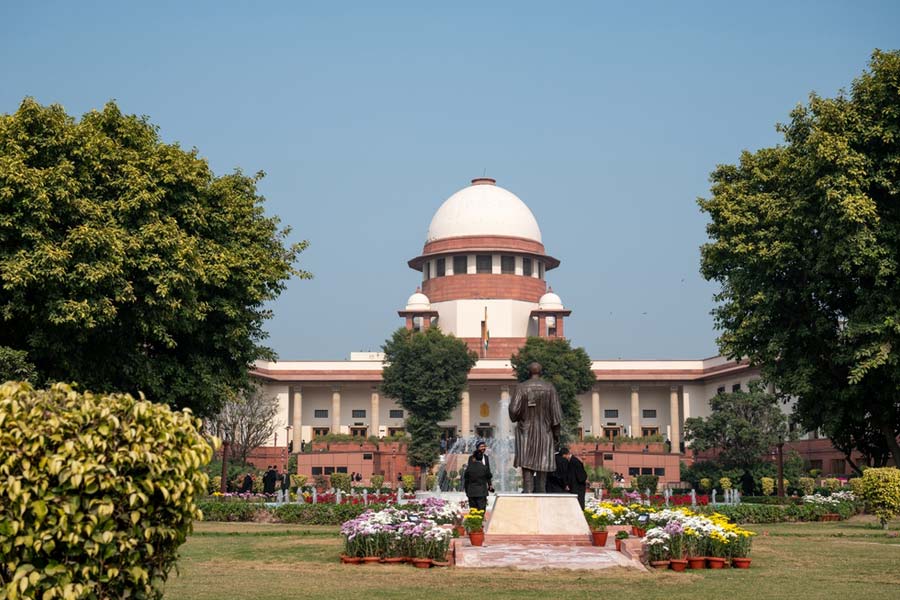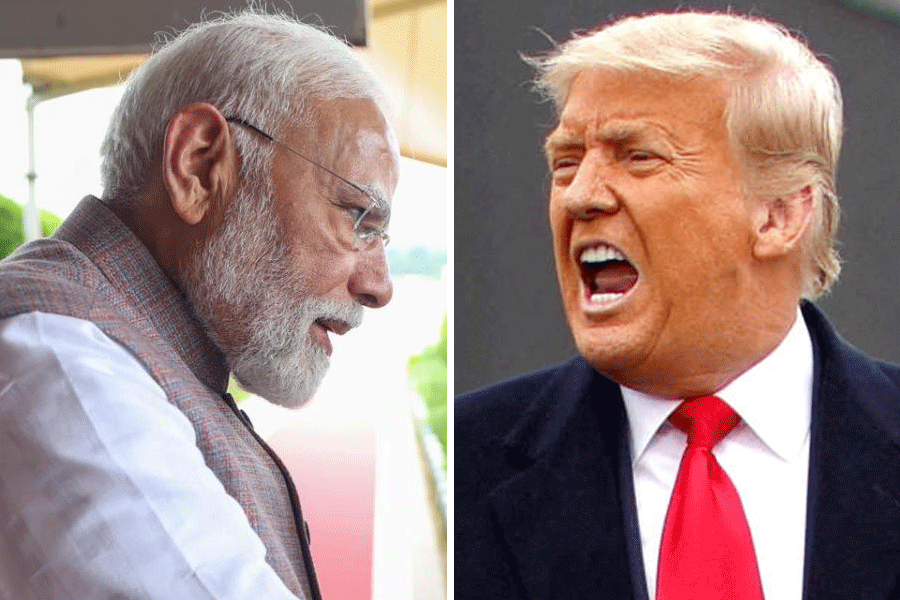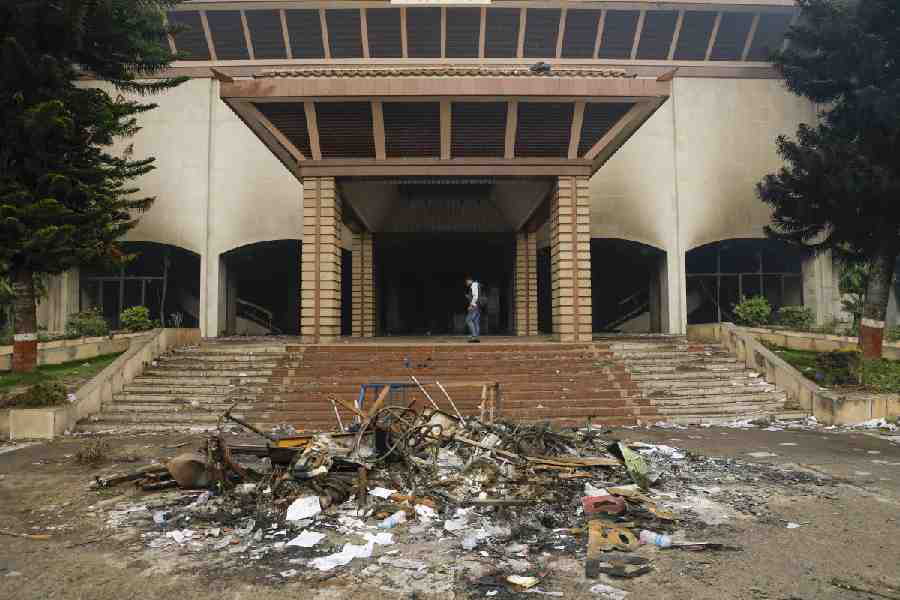The titles tell the tale. Victim, Abu Ghraib, Wounded, Face in Agony: an anthology of disturbing images. This is the inner tale of Jogen Chowdhury who’s been reacting to the inhumanity of human beings in his recent art?with some 67 drawings, paintings and serigraphs ? on view at CIMA till 11 March.
But then, what’s in a name? A broken skull called by some other name ? maybe an innocuous Head or something ? would be just as disturbing. Disturbing not only because of the open gashes, split stomachs of pregnant women, broken heads stitched together. Not only because the images are a testimonial of the times. But also because of the quiet, starkly clinical, even aseptic way of depicting violence. An enquiring way, as though the bodies and heads were kept in a morgue for post-mortem or being examined on a doctor’s table.
For, although it’s epic violence that Chowdhury suggests ? which is why some of the drawings are very large ? he’s not for overheated emotions. The strategy seems to be of alienation, to get viewers to go beyond emotions, to ask rather than exclaim. For, mind you, the gashes don’t spill gore; lacerations don’t ooze blood, although light shadings in red may occur. Besides, like in Chowdhury’s earlier art, the people portrayed remain anonymous. Stripped of all comforting and convenient social identity, they are, in many of the works, merely brutalised, demeaned human beings. Just bare bodies or heads. The material essence of the human animal abstracted from caste, community, country.
And, of course, class. Because “class” and other such catchwords of the mid-20th century don’t work any more. Today’s world offers no immunities as new gods crumble as surely did the old while spiritual voids grow. That is why if a Face (No. 9) seems to swivel around at an unknown terror, mouth frozen in fear; or a Face in Agony (No. 34) recoils at some unstated threat; or if a man’s back is bent in stooping sorrow, the only hope may lie in Compassion (No. 59) which is very human, too, as human as cruelty, but which may come more readily from a woman.
The woman has always been a vital presence in Chowdhury’s imagery. Even when she has a Bleeding Heart (No. 58), she may hold herself with something of a regal poise. But a cut down the chest is parted like an open zip. As though she could tear open the skin like a garment to reveal the raw vulnerabilities within. But Aftermath 1 is ambiguous. Its woman is sprawled on the ground, sari awry, hair splayed. Is this the aftermath of lovemaking? Or of rape, leaving the victim deadened, stupefied?
Whether it’s pastel, pen, brush or print, what gives the works their trenchant articulation is the line. Often splendidly bare, but at times adorned with details of shading and substance but always to achieve an artful, if biting, gaucherie of form. Chowdhury has clearly declared his debt to traditional imagery, like the stylised eyes of Durga. How the same eyes of ritual devotion could be inverted in meaning shows the way roots can be startlingly refreshed.
Of an entirely different temper are a few still lifes and landscapes. Celebratory and colourful, they pulsate with a winsome childlike verve.











